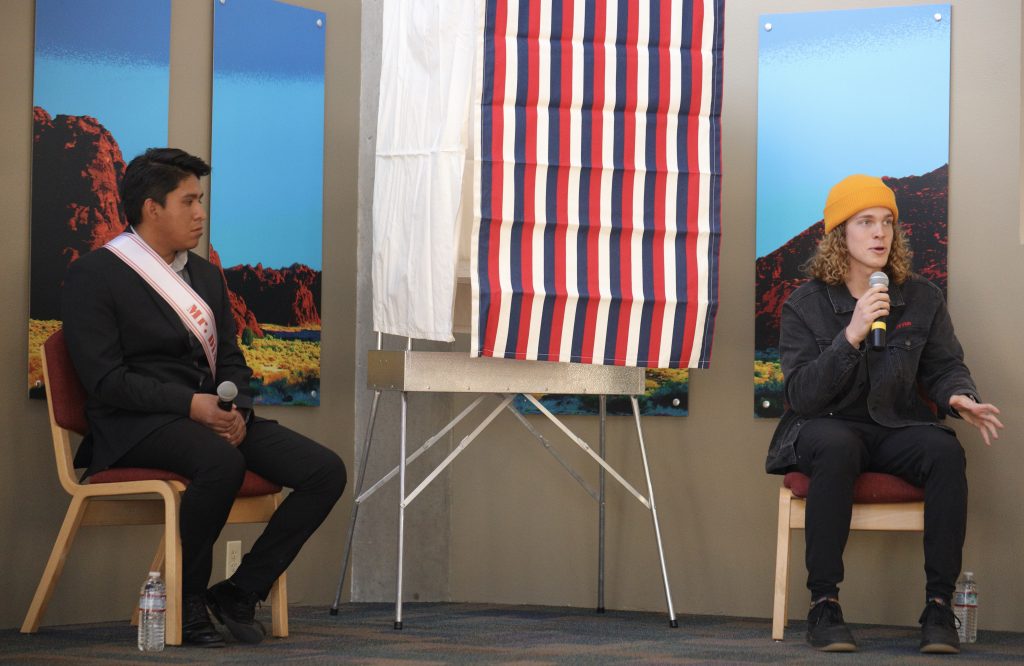Most students don’t think much about student fees other than the added cost to tuition. Little do they know how their money is spent.
University funding and the distribution of those funds depend on where the funds originate. Revenues like dining services or university housing typically stay within those areas to offset operating expenses and upgraded facilities.
Gifts and grants are specified by donors or granting agencies to where they want the money to go. Course fees are administered through academic departments while student fees are recommended by the Student Fee Advisory Board, which is paneled by voting students and chaired by Student Body President Devon Rice, senior business marking major from Bountiful.
The Student Fee Advisory Board meet annually to discuss and review the structure and utilization of student fees. They consider any requests to reduce or redirect the Utah Tech Student Association student fee revenue. These meetings usually start in the spring and the board goes through and reviews every fee.
Bryant Flake, executive director of planning and budget, said: “It’s important to keep in mind that there are strict limitations on the usage of student fees, which are outlined in USHE policy R516. Specifically, student fees can only be used for construction and operation of student-approved facilities or student activities, programs, and services. The policy states that student fees should not be used for instruction, academic support, or administrative expenses.”
Students have the chance to find out exactly where their student fee money is going at the Truth in Tuition event.
Truth in Tuition is an event held every year as part of the Student Fee Allocation process to inform students how their student fees are being allocated for the next year. This event is mandated by law from the state of Utah.
“It’s in the ballpark of around $400 to $500 each semester that students don’t know about,” Rice said. “Little do they know it’s their fellow students deciding on how much they’re spending.”
Rice said he would estimate no more than ten students who aren’t part of student leadership attend Truth in Tuition each year.
Student government is funded by student fees, so the budget they have is from student fees from the previous semester. They always stay a semester behind to make sure they have the money they need and don’t overspend their budget.
Within student fees each semester, UTSA received $42.50 which turned into about $287,000, and that is divided between each branch of student government. The Student Senate budget is usually around $18,000 per semester.
“The executive council decides what percentage each branch gets,” said vice president of academics Karson Ray, junior biology major from Hurricane. “Every year it changes.”
22% goes towards stipends for those in Student Government, 22% student life, with every other branch at about 8% of the fund. Their budget stays around the same amount each semester in order to pay for these events and market for the university.
At the end of each year, if there is a large sum of money left in their budget, Legislative Day is planned for students to come and ask for funding. This can go towards a conference they want to attend but don’t have the funding for, as well as help with their capstone project and more.
“It can be any academic pursuit that is going to further their knowledge or exposure to their career field that we can help fund,” Ray said.
They cannot fund an entire trip, but they can put about 50% of the total cost towards the event the student wants funding for. For specific events, such as flights or hotel rooms, there is a capped amount the Senate can help fund.
Last year, Student Senate had around $11,000 left in their budget, so they hosted a Legislative Day. Students were able to present to the Senate and ask for help funding their projects. The Student Senate used about $9,000 to help students. Students need to go through the application process and submit what they want the funding for. The Senate reviews the applications, and the student will present in-person to the senate and the funding will be allocated that day.



